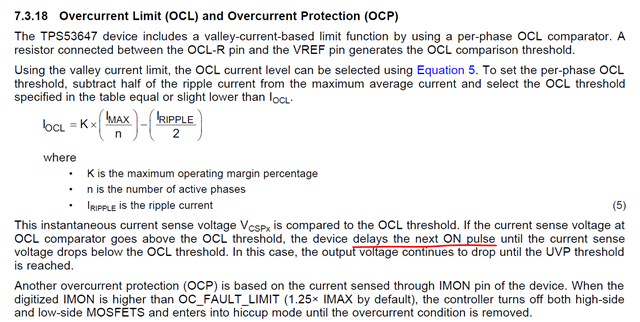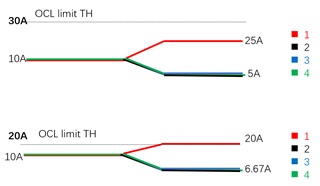Hi TI,
Although this device has current balance circuits, but as you know current can not be fully balanced without any error. If, one of four phases has higher current than other three, and only this phase meets OCL condition, how could OCL protection behave?
In datasheet, it claims next on pulses will be delayed. If phase 1 OCL happens(CSP1 >OCL_threshold), will it prevent phase 2/3/4 PWM firing?



